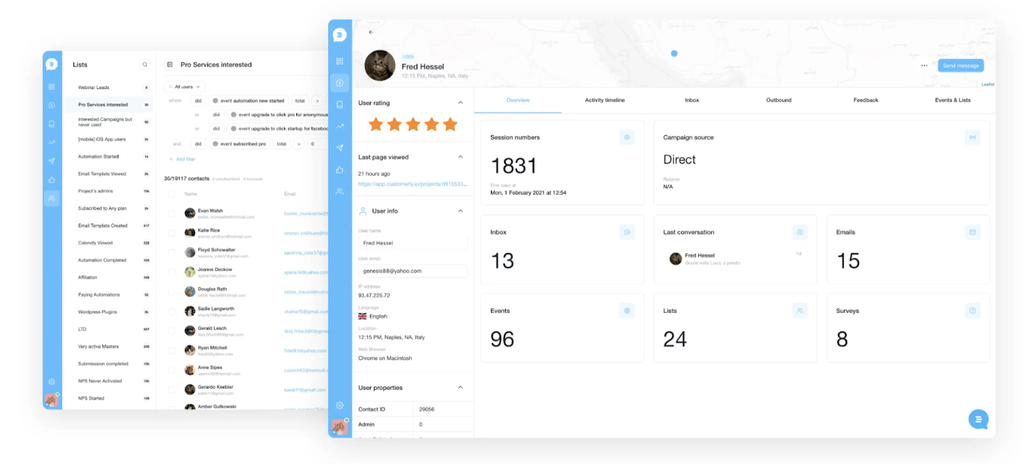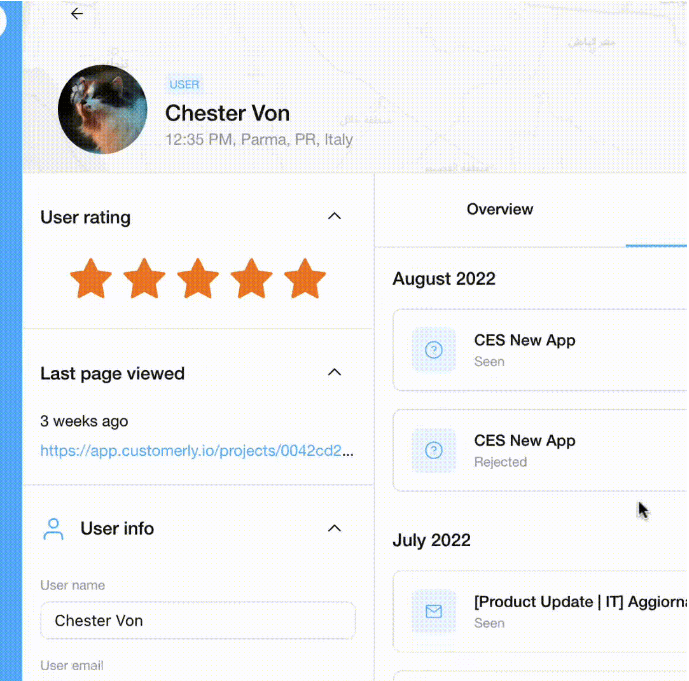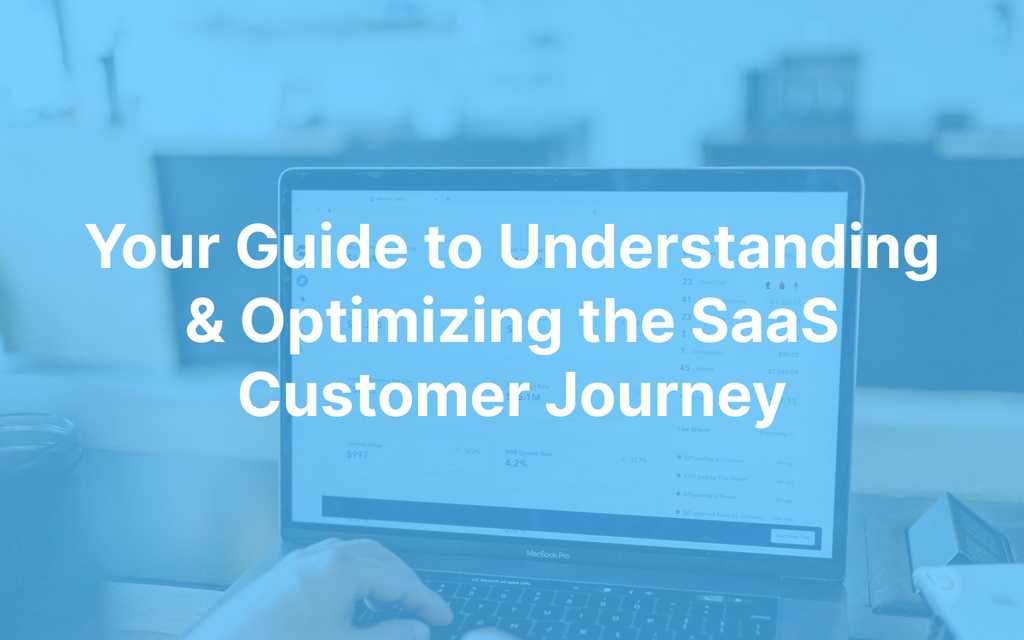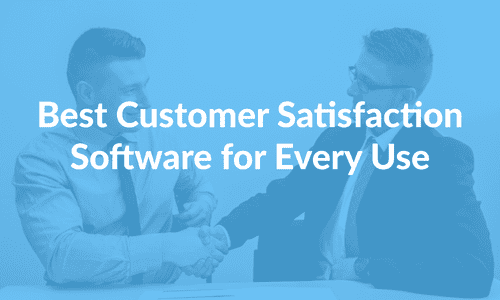Nobody wakes up and decides to sign up for a SaaS product. And they definitely don’t become promoters overnight. It takes time, effort, and a well-crafted strategy to build up the trust required to get customers to hit the “buy” button.
The SaaS customer journey is a way of thinking about this process that helps to ensure you’re making the right decisions to maximize customer satisfaction. And in this Customerly guide, we’ll be helping you do just that.
Ready to build a profitable, customer-centric SaaS business? Let’s get started.
What Is the SaaS Customer Journey?
The simple definition? A SaaS customer journey is the path a certain customer segment takes from the initial discovery of your product to becoming a loyal, paying, and (ideally) promoting user.
For a more fleshed-out answer, a SaaS customer journey is made up of stages and touchpoints:
- Stages: Steps in your customer journey defined by what a customer needs to accomplish to move forward. For example, to move past the initial awareness stage, customers need to become aware of your product (obviously).
- Touchpoints: Points of contact between you and your customers. For example, a blog post (like this one!) might be the touchpoint that moves a customer past the awareness stage.
By mapping out these stages and touchpoints, the goal is to create a more streamlined journey that gets as many customers as possible are getting from A to B.
Why Is SaaS Customer Journey Mapping Important?
1. It Helps Understand Customer Behavior
While customer experience management (CXM) tools like Customerly make it easier to zoom in on individual customer journeys, you still need a way to generalize customer behavior at scale.
This is where customer journey mapping comes in.
When you create a detailed, reliable map of the paths users are taking through your business that includes touchpoints, stages, bottlenecks, and friction points, you can:
- Plan, optimize, and personalize marketing strategies that work for your audience.
- Prioritize updates, features, and fixes that make life easier for your users.
- Identify key opportunities (i.e., subscriptions, upsells, cross-sells, and referrals).
- Organize internal processes (i.e., roles, KPIs, benchmarks) around customer success.
2. It Enhances Customer Experience & Prevents Churn
Self-service help centers are crucial tools—but they aren’t always enough to help customers progress toward ah-ha moments.
Customer journey mapping helps you provide a personalized, proactive experience that goes beyond self-service. From targeted customer onboarding sequences to intelligent live chat triggers, mapping out the customer journey makes it easier to identify opportunities and build meaningful relationships.
3. It Helps Customers Reach Their Objectives
And finally, on a related note—mapping the customer journey helps you help your customers reach their objectives—finding real value in your product. When they do see that value, they become more loyal and engaged and ultimately help you reach core business objectives.

Just ask Feed Donkey—by anticipating friction points on their pricing page and addressing them with Customerly’s live chat triggers, they were able to increase conversions by 30%.
Stages of the SaaS Customer Journey
Awareness
Awareness is the easiest stage to understand. Before the awareness stage, the customer has no idea you exist; after the awareness stage, they do—simple!
There are two main routes into the awareness stage:
- Intentional Discovery: The customer has a problem and actively seeks a solution.
- Unintentional Discovery: The customer is exposed to your product by “accident”—maybe they saw an ad or a friend mentioned it.
Regardless of how the customer entered the awareness stage, your goal is to grab their attention and introduce them to what you’re offering. That means demonstrating your product’s value as a solution to the customer’s problem.
Common SaaS Awareness Touchpoints
- Word-of-Mouth
- Social Media
- Ads (Google Ads, Paid Social)
- Content Marketing (Blogs, Videos, etc.)
Consideration
Customers are now aware of your product’s existence but aren’t quite sure whether it’s the right fit for them. This stage varies based on product and industry, but it’ll usually be defined by:
- Learning: Customers will probably try to understand the problem your product solves.
- Exploration: Customers will usually take a closer look at your product’s features and benefits.
- Comparison: Customers will compare your product with other alternatives on the market.
- Testing: Customers will usually want some kind of trial or demo before diving in head-first.
Making sure you have resources, processes, and people in place for each of these needs (but especially testing) is key.
Common SaaS Consideration Touchpoints
- Webinars
- Product Demos
- Free Trials
- Case Studies
- Questions & Answers (Q&As)
- Sales Staff
Purchase (Decision)
At this stage, customers have decided to purchase your product—nice!
Your goal in the purchase stage is to make sure they don’t start doubting themselves during the checkout process (i.e., making it as painless as possible).
Common SaaS Purchase Touchpoints
- Checkout Pages
- Product Configuration Pages
- Payment Pages
Onboarding
Getting the onboarding stage right is critical for SaaS companies. According to most studies, around 86% of customers would remain loyal if they received onboarding and ongoing education.
The onboarding process is usually broken down into two stages:
- Initial Onboarding (or Activation): This includes the initial setup of the product.
- Continued Onboarding (or Education): This is where customers learn to use the product more deeply.
Common SaaS Onboarding Touchpoints
- Product Tours
- Live Chat
- Checklists
- Email Series
- Video Tutorials
- User Guides & Help Centers
Renewal
Renewal is a stage that’s especially important for SaaS companies. It’s usually a side effect of the overall customer journey—meaning that if you do all the other stages right (especially onboarding), the renewal will take care of itself.
You can do a few things to help this stage along, though. One great approach is by asking for customer input through surveys and questionnaires, an important part of the customer feedback loop.
Customerly’s product improvement survey is a great way to do this. Build an automated funnel that targets customers reaching the renewal stage with this survey and rewards them for their feedback with personalized offers.
Common SaaS Onboarding Touchpoints
- Email & In-App Notifications
- Surveys & Polls
- Customer Service Communication
- Loyalty Programs
Advocacy
Last but not least—advocacy.
This is the final stage of the customer journey for SaaS companies—and it’s also the most rewarding. Advocacy means that customers love your product so much that they start actively promoting it.
Why is this such a big deal? Because word-of-mouth recommendations, referrals, and reviews generate the highest-quality leads for SaaS companies, they’re incredibly cost-effective.
Common SaaS Advocacy Touchpoints
- Referral Programs
- Social Sharing
- Reviews & Testimonials
- User Groups & Communities
- NPS Surveys
- Review Prompts
How To Create a SaaS Customer Journey Map
Define Your Initial Goal
While you can eventually focus on a bunch of goals, you need to pick a single goal to get the ball rolling. Is your goal to increase user engagement? Increase customer lifetime value? Improve customer service?
This step is inherently business-dependent. While we can’t really help you pin down the content of your goals, we can share some more general advice—make sure they’re defined concretely.
We’re talking about:
- Timelines
- Success metrics
- Benchmarks & improvement margins
- Ownership
Pick a Customer Persona
A customer persona is a generalization of a key customer group. And since each customer group will have different objectives and preferences, it’s important to create a customer journey map for each persona.
To come up with your personas, start by segmenting your customers into groups that have similar needs and behaviors. Then, use surveys to flesh out each persona’s characteristics:
- Demographics: Age, gender, location, etc.
- Personality: Attitudes and values
- Goals: Short-term and long-term objectives
- Challenges: Problems they’re trying to solve
- Current Solutions: Products and services they’re currently using
You can use Customerly’s customer persona survey to start collecting data in minutes.
Just pick a customer segment, create a list in your Customerly CRM, and send out the survey via email.
Know What Success Looks Like for Your Customers
Your goals are important, but they’re almost always the result of your customers achieving their goals—increasing sales might be a side effect of a great trial experience, for example. So, customer success needs to be at the core of your journey map.
What are your customers trying to accomplish? And how do they know they’ve accomplished it?
Answering these questions through data analysis and surveys gives you the ability to hand customers these successes more readily. For example, if you know customers in the consideration stage are usually comparing your product to two competitors, you can create and distribute content that makes the process easier.
Determine the Touchpoints at Each Stage
Now it’s time to dive into your CXM tool to figure out which touchpoints the customer persona is engaging with at each stage of their journey.

With Customerly, this data is easily accessible directly in our CRM. You can view a range of touchpoint data for every customer you have on the books, including:
- Campaign Source
- Time on Page
- Email Opens & Clicks
- Price Quotes & Orders
- Account Accesses
- Survey Responses
- Email Engagement
By identifying patterns, you can start to map out your most important touchpoints and create a journey map for each customer persona.
Create a Process for Collecting, Sharing & Actioning Customer Feedback
Feedback is a powerful tool for identifying friction points that are keeping customers from achieving their goals.
That’s why you need to have a process in place for collecting, sharing, and actioning customer feedback. With Customerly, you can use surveys to collect feedback from customers regularly. Your survey results are automatically stored in customer profiles for easy analysis.
Build Funnels That Optimize Each Touchpoint
Now it’s time to put your journey map into action. The best way to do this is by creating automated funnels that optimize each touchpoint for the customer persona.
Identify which actions need to be taken at each stage of the journey and create automated workflows that optimize those actions. You can use Customerly’s drag-and-drop funnel builder to easily build funnels that guide customers from one stage to the next.
Not sure how to get started? Just launch one of our pre-built funnel templates and customize it to fit your needs.
Modify & Fine-Tune Your Map
No customer journey map is set in stone to begin with. You’ll need to spend quite a bit of time modifying and fine-tuning it.

Again, Customerly can help here by allowing you to track customer activity across all your touchpoints in real time with a full customer journey timeline embedded in every customer profile. This makes it easy to quickly identify any weak spots and adjust your map accordingly.
Conclusion
Creating a customer journey map is an essential part of building an effective digital marketing strategy. When you understand the different touchpoints, goals, and challenges customers engage with, you can build pathways that streamline their path from awareness to advocacy.
At Customerly, we arm SaaS businesses with the tools they need to understand and optimize every stage of the customer journey.
Try Customerly with a 14-day free trial and see the benefits for yourself.


